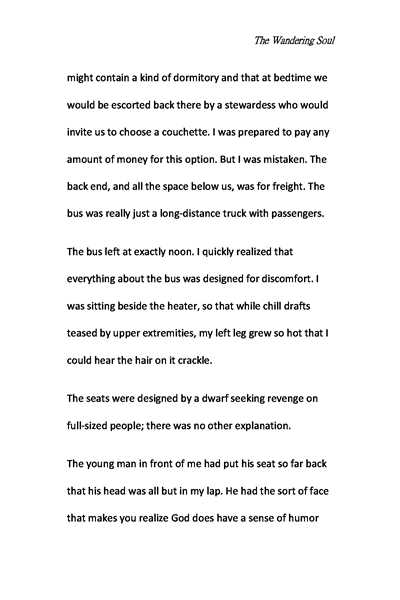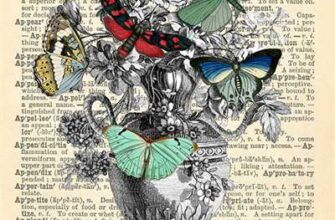
Writing an autobiography can be an exciting and introspective journey. It allows you to reflect on your life experiences, document your memories, and share them with others. Whether you’re a college student looking to document your life or a person who wants to publish a book, knowing how to start your autobiography is an important first step.
Before you begin writing, it’s essential to consider the format and structure of your autobiography. Autobiographies can be written in many different ways, depending on the person and the type of story they want to tell. Some prefer a chronological approach, starting from their early years and progressing through their life. Others may choose a thematic approach, focusing on specific areas or experiences.
To get started, you need to build a logical and coherent structure for your autobiography. Consider the type of experiences and memories you want to include and think about how to organize them. You can use a table of contents to guide readers through the book or use headings and subheadings to divide it into different chapters or paragraphs. This allows readers to easily navigate through your autobiography and find the information they’re looking for.
If you’re unsure of how to start, it can be helpful to read samples of well-written autobiographies. This can give you an idea of the format, tone, and style that you like. You can learn from the experts and see how they’ve built their autobiography. Do you like a more literary and intellectual approach, or do you prefer a simple and straightforward writing style? Reading different examples can help you find your own voice and style.
When starting your autobiography, the first paragraph is crucial. It should be captivating and grab the reader’s attention. For example, you can begin with a powerful and thought-provoking quote or an intriguing anecdote. This will instantly make your autobiography more interesting, and the reader will be eager to learn more about your story.
Another important part of starting your autobiography is to consider your target audience. Who are you writing for? Is it for your family and friends, or do you want to publish it for a broader audience? Knowing your audience will help you tailor your writing style, tone, and content accordingly. It will also give you an idea of what aspects of your life to highlight and emphasize.
Remember, writing an autobiography is a personal and reflective process. It’s an opportunity to look back on your life, celebrate your achievements, and learn from your mistakes. Don’t be afraid to be vulnerable and share your emotions, as this will make your story more relatable and engaging. And always remember to have fun and enjoy the writing process!
In closing, starting an autobiography is just the first step in a long but rewarding journey. With the right guidance, format, and structure, you can create a beautiful piece of writing that reflects your life and experiences. Take the time to plan, organize, and think about the theme and purpose of your autobiography. Seek help from friends, family, or even a writing service if needed. And most importantly, don’t forget to enjoy the process and let your story unfold!
How To Write an Autobiography An Ultimate Guide From Start To Finish
Writing an autobiography can be an exciting and rewarding experience. It gives you the opportunity to reflect on your life, share your unique story, and leave a lasting legacy for future generations. If you’ve always wanted to write an autobiography but don’t know where to start, this ultimate guide is for you!
First, Get Your Mental Table of Contents: Before you begin writing, take some time to brainstorm the key events and experiences you want to include in your autobiography. Think about the major themes and lessons you want to convey to your readers. This will serve as a roadmap for your writing.
Then, Build an Intellectual Structure: Once you have the contents of your autobiography in mind, it’s important to consider the structure of your book. Decide on the format, whether it will be a chronological retelling of your life or organized thematically. This will help you give a logical flow to your story.
Next, Start With an Engaging Opening: The first page of your autobiography is crucial. It needs to grab the reader’s attention and make them want to keep reading. Consider starting with a powerful anecdote, a fascinating fact, or a thought-provoking question.
Don’t Forget the Body Paragraphs: The meat of your autobiography lies in the body paragraphs. This is where you delve deeper into the important events and experiences that have shaped your life. Share your thoughts, feelings, and insights, and make sure you connect everything back to the overarching theme of your autobiography.
Include Your Personal Reflections: A good autobiography isn’t just a collection of facts and events – it’s also an exploration of your thoughts and emotions. Take the time to reflect on your experiences and share your insights with your readers. This will make your autobiography more interesting and relatable.
Get Professional Advice and Help: Writing an autobiography can be challenging, especially if you’re not familiar with the genre. Consider seeking advice from experts or hiring a professional writing service to help you with the process. They can provide guidance on structure, style, and more.
Learn From Examples: Reading autobiographies and memoirs written by others can be a great way to learn more about the genre and get inspiration for your own writing. Analyze how successful authors tell their stories and incorporate their techniques into your own autobiography.
When in Doubt, Publish: Don’t be afraid to share your autobiography with the world. You never know who might find your story inspiring or relatable. Consider self-publishing or submitting your manuscript to literary agents and publishing houses.
Closing Thoughts: Writing an autobiography is a fulfilling endeavor that allows you to share your unique experiences and insights with others. Remember, there is no right or wrong way to write your autobiography. Just start, get your thoughts on paper, and enjoy the process of creating something beautiful and meaningful. Your story deserves to be told, and the world is waiting to hear it!
📚 Start writing your autobiography today and leave a lasting legacy!
Table of contents
When it comes to writing an autobiography, it is important to consider how you want to structure the contents of your book. This table of contents will guide you through the process of writing a compelling and interesting autobiography.
| Chapter | Page |
| 1. Introduction | 1 |
| 2. Childhood and Early Experiences | 5 |
| 3. Education and College Years | 10 |
| 4. Professional Life | 15 |
| 5. Personal and Family Life | 20 |
| 6. Lessons Learned | 25 |
| 7. Closing and Reflections | 30 |
These chapters provide a logical and thematic structure to your autobiography. Start with an introduction to grab the reader’s attention, then take them back to your childhood and early experiences. From there, move on to your education and college years, followed by your professional and personal life. Finish with lessons learned and closing thoughts.
It is also important to include samples of your writing throughout the book. This will help the reader get a sense of your writing style and the experiences you are describing. You may also consider including photos, documents, or other visuals to enhance the reading experience.
When you finish writing your autobiography, it’s a good idea to have someone else, like a professional editor or a trusted friend, read through it. They can provide valuable feedback and make suggestions for improvement.
Remember, an autobiography is different from a memoir. While both genres involve writing about your own life, an autobiography is typically a more comprehensive and structured account of your life, while a memoir focuses on specific themes or periods. Learn from the ultimate experts in autobiographies – books written by those who have published their own life stories.
If you’re still not sure where to start, there are many writing services and guides available to help you write your autobiography. Just remember that the most important part of the process is simply getting started. With persistence, a logical structure, and a beautiful writing style, you’re sure to create a compelling autobiography that will captivate readers and leave a lasting impression.
Format Beautiful Professional Books
When it comes to writing autobiographies, the format is an important step in the process. The way your book is formatted can make a difference in how it is perceived by readers. In this section, we will discuss how to format your autobiography in a beautiful and professional manner.
1. Choose a thematic format: Before you start writing your autobiography, think about the overall theme or topic you want to explore. This will provide guidance when structuring your book and organizing your content.
2. Consider the table of contents: The table of contents is an important part of any book, including autobiographies. It gives readers a preview of what they can expect and helps them navigate through the chapters. Think about the main sections and chapter titles that you want to include.
3. Build a professional structure: A well-structured autobiography includes an introduction, body paragraphs, and a closing. These sections should flow logically and cohesively, taking the readers on a journey through your life experiences.
4. Include interesting anecdotes: Don’t just focus on the chronological events of your life. Include interesting anecdotes and stories that showcase your personality and provide a deeper understanding of who you are as a person.
5. Get advice from experts: If you’re unsure about how to format your autobiography, seek advice from experts or consider reading samples from other professional autobiographies. Their knowledge and experiences can help guide you in the right direction.
6. Don’t forget about the theme: Throughout your autobiography, always keep the theme in mind. Tie your experiences back to the thematic element to create a more cohesive and interesting narrative.
7. Consider the genre: Autobiographies can differ in genre, such as memoirs, college autobiographies, or intellectual autobiographies. Understand the genre you’re writing in and consider any specific formatting conventions associated with it.
8. Learn from professional autobiography writing services: If you need more help with formatting, consider seeking the services of a professional autobiography writing service. They can provide guidance, examples, and support to ensure your book is formatted beautifully and professionally.
9. Finish and publish your book: Once your autobiography is written and formatted, it’s time to finish and publish it. Make sure to proofread your work and consider hiring an editor to help with the final touches.
10. Don’t be afraid to be unique: While there are certain formatting conventions to consider, don’t be afraid to add your own unique touch to the design and layout of your book. Make it stand out and reflect your personality.
In conclusion, formatting your autobiography in a beautiful and professional manner is an important step in the writing process. Consider the thematic element, create a well-structured book, and seek guidance from experts or professional services if needed. Remember to keep the theme in mind throughout the writing process and don’t be afraid to add your own unique touch. With these tips, you’ll be on your way to creating a professional and captivating autobiography.
Autobiography vs Memoir
When it comes to writing about one’s own life, there are two main genres to consider: autobiography and memoir. While both types of writing explore personal experiences and memories, there are some key differences between them.
An autobiography is a book written about the author’s entire life, from birth to the present. It is a comprehensive account of their life, including important events, relationships, and achievements. Autobiographies are usually written by professional writers or well-known persons and are often published and sold to the general public. They follow a logical structure and include chapters or sections that cover different periods or themes in the author’s life. Autobiographies aim to provide a complete picture of the author’s life and are often seen as the most authoritative and factual type of personal writing.
A memoir, on the other hand, focuses on a specific period or theme in the author’s life. It is a more condensed and focused type of autobiography, typically written by ordinary individuals or less-known persons. Memoirs can be about a short period of time, a specific event, or a particular aspect of the author’s life, such as their career or a personal struggle. They are usually written to share personal experiences, insights, and lessons learned. Memoirs often have a more subjective and reflective tone, as the author shares their emotional and intellectual journey. They may not follow a strict chronological order and can include a mix of anecdotes, reflections, and observations. Memoirs are a popular genre, and many bestselling books fall under this category.
So, what type of personal writing should you choose? It depends on your goals and what you want to achieve with your book. If you are looking to publish a professionally written comprehensive account of your life, an autobiography might be the way to go. On the other hand, if you want to share a specific story, explore an interesting theme, or provide a more personal and reflective account of your experiences, a memoir can offer more flexibility and creativity.
When writing your autobiography or memoir, it’s important to consider the format and structure of your book. You can start by outlining the main chapters or sections based on the chronological order or thematic approach. Then, build a table of contents to guide readers through the different parts of your book. Each chapter or section should have a clear theme, and the contents should flow logically from one to another. Use paragraphs to organize your thoughts and make the text easy to read.
If you’re still unsure where to start, it can be helpful to read some samples or examples of autobiographies and memoirs. By studying the work of others, you can learn more about the genre, the writing style, and the different approaches authors have taken. You can also get a sense of what interests you as a reader and what type of book you would like to write.
Remember, writing an autobiography or memoir is not just about the end product. It’s also a process of self-discovery, reflection, and personal growth. Don’t be afraid to experiment with different writing styles, voices, and perspectives. Just start writing and let the words guide you. And if you ever feel stuck or need help, there are many writing experts and professional services that can assist you along the way.
In conclusion, whether you choose to write an autobiography or a memoir, the ultimate goal is to create a beautiful and compelling book that shares your unique story with the world. Both genres have their own strengths and characteristics, so choose the one that best aligns with your intentions and preferences. Just remember, the most important thing is to start writing and let your voice be heard.
📚 More Autobiography Samples
If you’re looking for more examples of autobiographies to help you get started on your own, here are a few suggestions:
- Books by Famous Persons: There are many autobiographies written by well-known figures that can provide inspiration and guidance. Consider reading autobiographies by intellectuals, leaders, or celebrities to learn from their experiences and writing styles.
- Autobiography Samples from Experts: Professional writers and memoirists often publish their own autobiographies, which can serve as a valuable source of knowledge and advice. Look for autobiographies by experts in the literary or journalistic field.
- Thematic Autobiographies: Some autobiographies follow a specific theme or focus on a particular aspect of a person’s life. These types of autobiographies can be useful for understanding how to structure your own autobiography and build a coherent narrative around a central theme.
- College Autobiography Samples: If you’re a student or planning to apply to college, you may need to write an autobiography as part of your application process. College autobiography samples can give you an idea of what admissions officers are looking for and help you craft a compelling personal statement.
When exploring these autobiography samples, pay attention to the format, structure, and writing style that resonates with you. Take note of how the authors use paragraphs, logical flow, and closing remarks to build a compelling narrative. Just remember that while these examples can be a helpful guide, your autobiography should still be unique to your own experiences and personality.
Ultimately, the most important thing is to start writing and get your thoughts down on the page. Whether you’re aiming for a more professional, intellectual tone or a more personal and emotional style, use these samples as a starting point to help you find your own voice and create a beautiful autobiography that reflects who you are.
Writing the body paragraphs
When writing an autobiography, the body paragraphs are an important part of the structure. They provide the opportunity to delve deeper into your experiences, thoughts, and emotions. In this section, we’ll guide you on how to write compelling body paragraphs for your autobiography.
First, consider the theme or main idea of your autobiography. This will help you determine what specific experiences and anecdotes you should include in each paragraph. Each paragraph should focus on a different aspect of your life, providing a logical and thematic progression.
Start each paragraph with a topic sentence that introduces the main point or idea you will address. Use this sentence to grab the reader’s attention and make them want to continue reading. For example, if your autobiography is about your love for books, a topic sentence could be: “My passion for literature began at a young age and has shaped my life ever since.”
Next, provide supporting details and examples to further illustrate your main point. These can be specific events, conversations, or reflections that highlight your experiences. Remember to include sensory details to make your writing more vivid and engaging.
When writing the body paragraphs, it’s important to strike a balance between including enough detail for your readers to understand your experiences and not overwhelming them with unnecessary information. Be selective in what you include, focusing on the most significant and interesting moments.
It’s also important to consider the overall structure of your autobiography. For example, you can start with childhood memories and progress chronologically, or you can arrange the paragraphs thematically. Choose a structure that best suits your story and goals.
Additionally, you can learn from the examples of other autobiographies or memoirs. There are many well-written autobiographies that can serve as samples and inspiration. Take note of how the authors craft their body paragraphs and use that knowledge to improve your own writing.
Lastly, consider seeking the help of experts or professionals in autobiography writing or self-publishing. They can provide valuable advice and guidance to ensure your autobiography is written in a professional and beautiful manner.
In summary, writing the body paragraphs of your autobiography is a crucial step in building a well-structured and compelling book. Consider the thematic elements, include relevant and interesting experiences, and use the guidance of experts. By following these tips, you can create a memoir that will captivate readers and leave a lasting impact.
Autobiography body paragraphs example
When writing an autobiography, the body paragraphs are where you will delve into the details of your life experiences. These paragraphs should be well-structured and organized, providing a logical flow of information. They serve as the meat of your autobiography, where you can share important events, people, and concepts that have shaped who you are today.
For example, in the first body paragraph, you might want to start with your early life, including your childhood, family background, and education. You can discuss your upbringing and the significant influences that have guided your personal and intellectual development. This paragraph should give readers a glimpse into your early years and provide context for the rest of your autobiography.
The following body paragraphs could then focus on key experiences and milestones in your life. This can include your college years, professional endeavors, or any life-changing events that have had a profound impact on you. Consider including specific anecdotes and reflections to make the narrative more engaging and interesting for the reader.
Another thematic approach you can take is to organize your autobiography by the knowledge or expertise you have gained throughout your life. For example, you could have a paragraph dedicated to your professional achievements and another paragraph highlighting your personal growth and experiences.
If your autobiography has a specific theme, like overcoming adversity or pursuing a particular passion, you can also structure the body paragraphs around that theme. This will help create a more cohesive narrative and provide a clear focus for your autobiography.
As you write your body paragraphs, don’t forget to include a closing paragraph that wraps up your autobiography and leaves the reader with a final thought or reflection. This can be a good opportunity to reflect on your journey and the lessons you’ve learned along the way.
Remember, the ultimate goal of an autobiography is to give readers an insight into your life and experiences. While you may have many interesting stories to share, it’s important to be selective and choose the ones that are most relevant and meaningful. By following a logical structure and organizing your autobiography into well-written paragraphs, you can create a beautiful and engaging book that will leave a lasting impression on your readers.









